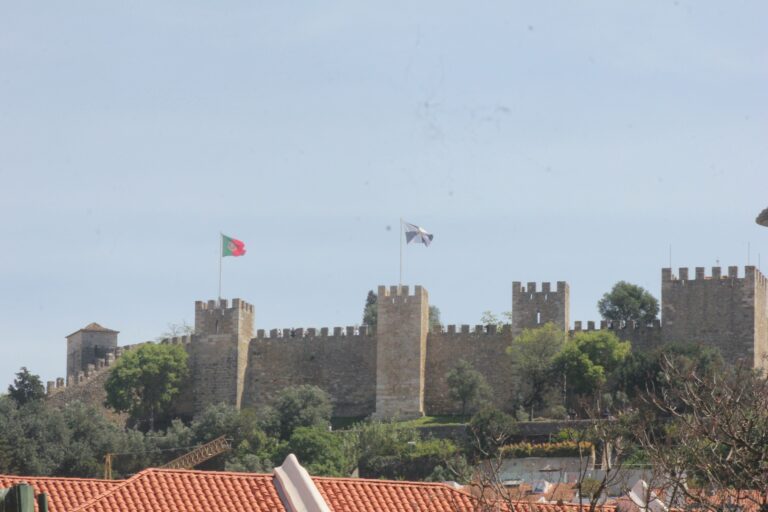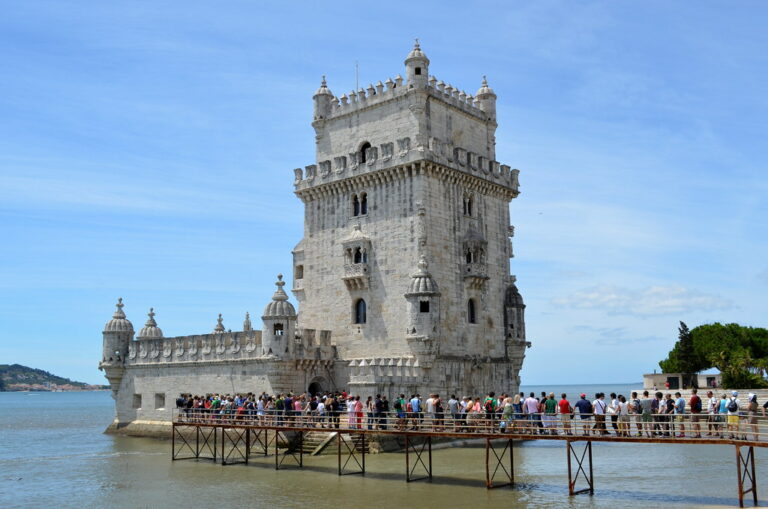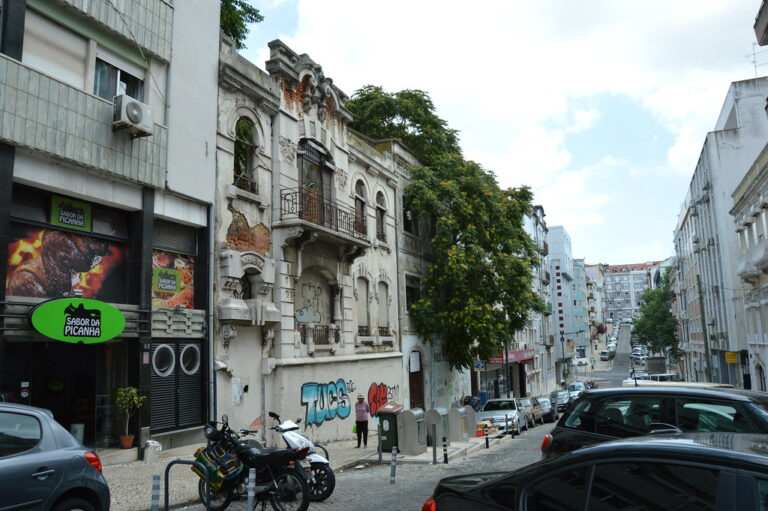Baixa Chiado is in the heart of Lisbon and is where the Portuguese story begins.
So, if you are busy planning a trip to Lisbon, both these districts have loads to offer, from accommodation to things to do.
As you wander through the district, you will encounter a tapestry of sights, sounds, and aromas that will awaken your senses and inspire you to explore the country further.
To learn more about the Baixa-Chiado district in Lisbon, keep reading to learn about this delightful district.
More About Baixa Chiado District
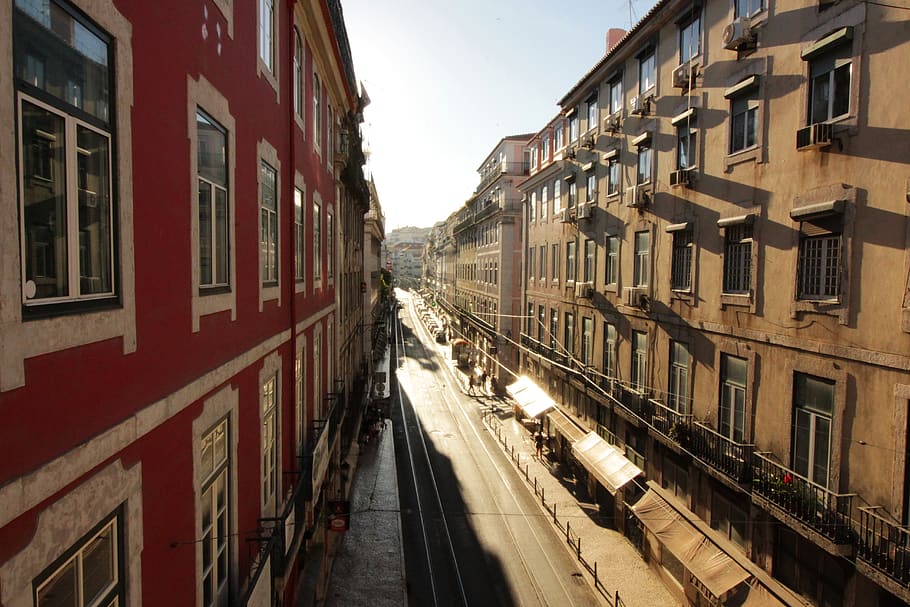
The Baixa district is in Lisbon’s downtown area. In Portuguese, it means low. Compared to the Alfama district, it is not hilly, making walking easier.
The Alfama district is known to be very hilly, so you will need good walking shoes to explore it.
The history of Baixa in modern times is marked by a tragic event that nearly wiped out the entire area. The great earthquake of 1755 left the place in ruins, prompting the need for a complete reconstruction.
After the disaster, the Marquis of Pombal was tasked with rebuilding the district, and he did so by creating the world’s first grid city layout.
The name “Pombaline” was given to the region’s style of architecture, which is now renowned for its numerous plazas, monuments, shops, and restaurants.
On the other hand, there is the characterful district of Chiado, which has narrower streets, a bohemian style, and is hillier.
The Baixa Chiado district is a well-connected hub for businesses and is famous for its trendy restaurants and bars.
The Easy Lisbon Quiz
Ready to test your Lisbon knowledge?
I’ve made an easy Lisbon quiz with 5 questions. Let’s see if you can get them right. 🤞
14 Things to Do in Baixa Chiado Lisbon
Rossio Square (Praça do Rossio)
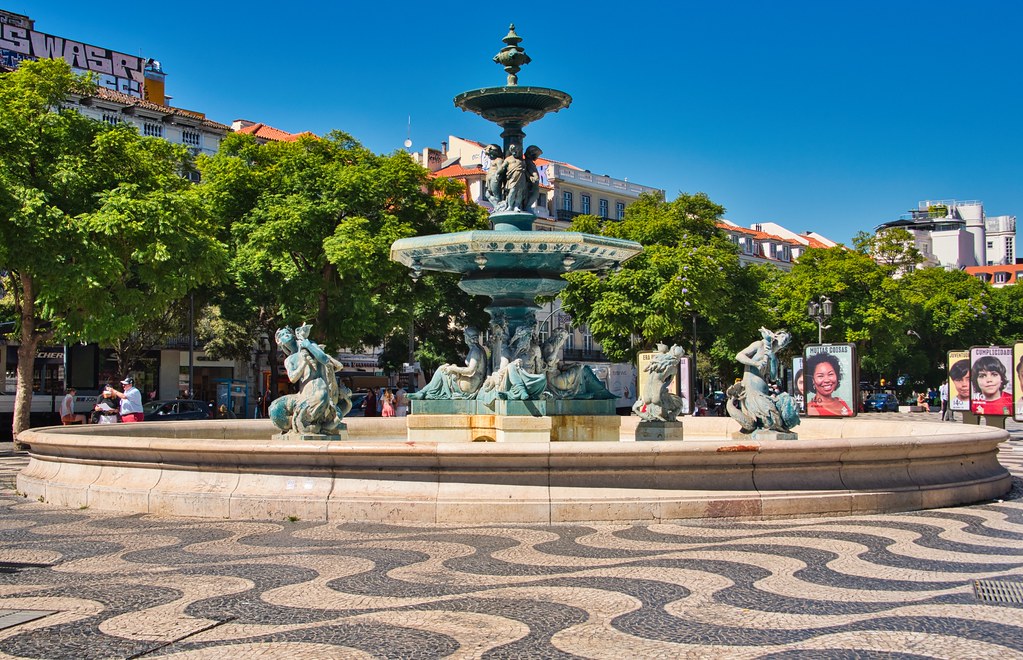
Pedro IV is one of many beautiful squares in Lisbon. It is a lively hub surrounded by notable buildings such as the National Theatre and the Dona Maria II National Theatre. The wavy-patterned pavement and a central column with a statue of Dom Pedro IV add to its charm.
Arco da Rua Augusta

Rua Augusta is a bustling pedestrian street and a shopper’s paradise. Lined with traditional shops, international brands, and cafes, it leads to Commerce Square and features the iconic Triumphal Arch at its northern end.
Praça do Comércio

Commerce Square faces the Tagus River and is one of Europe’s most beautiful squares. The triumphal arch, Arco da Rua Augusta, welcomes visitors. For €3, you can climb to the top to enjoy spectacular views of the Tagus River.
The Comércio Square is surrounded by government buildings, including the historic Ribeira Palace, which was destroyed in the 1755 earthquake. Here, you can also find the statue of King José I.
Other Plazas to Visit in Baixa Chiado
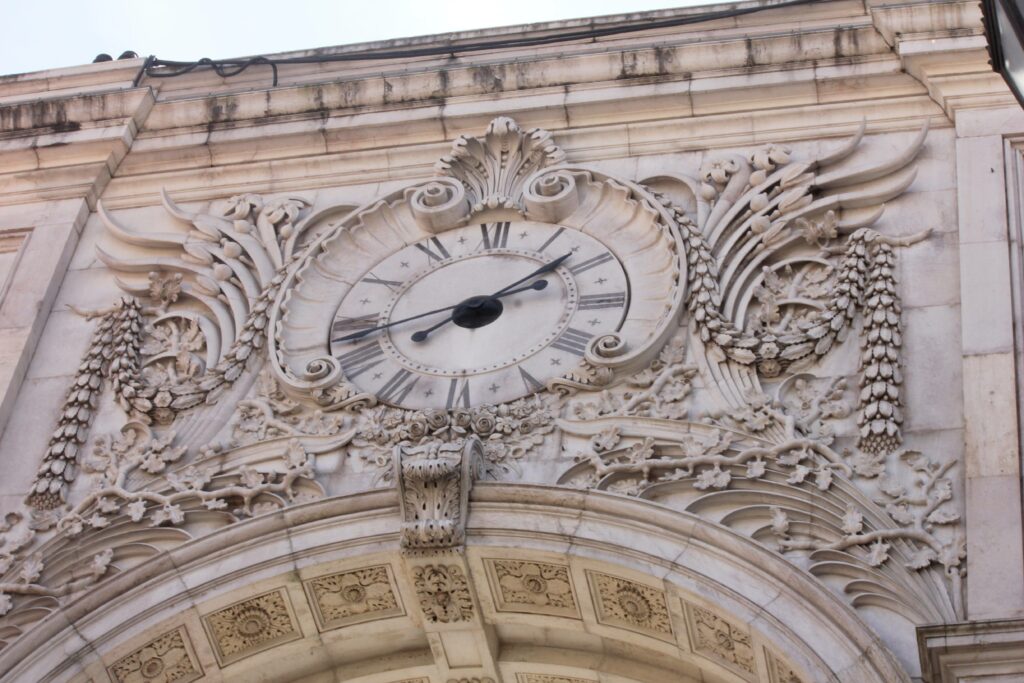
Towards the opposite direction of Rua Augusta lies Praça da Figueira, formerly the site of the old market.
There’s Praça Dom Pedro IV, commonly referred to as Rossio, which is widely regarded as the heart of Lisbon.
Another notable square is Praça dos Restauradores, boasting an impressive ambiance.
Its distinctive feature is the central obelisk commemorating Portugal’s liberation from Spanish rule in the 15th century.
Santa Justa Lift (Elevador De Santa Justa)
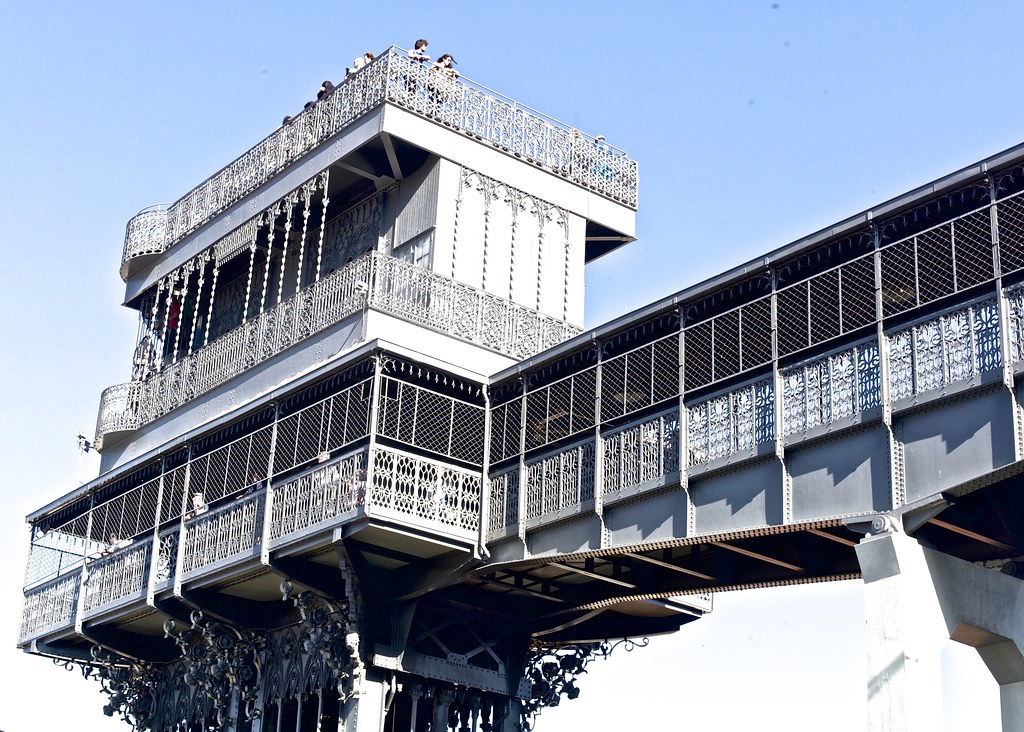
Elevador de Santa Justa is a beautiful cast-iron elevator that connects the Baixa and Bairro Alto neighborhoods.
It was built in 1902 and provides stunning city views from the top. The elevator’s base is on a narrow street, so it is not easily visible from a distance.
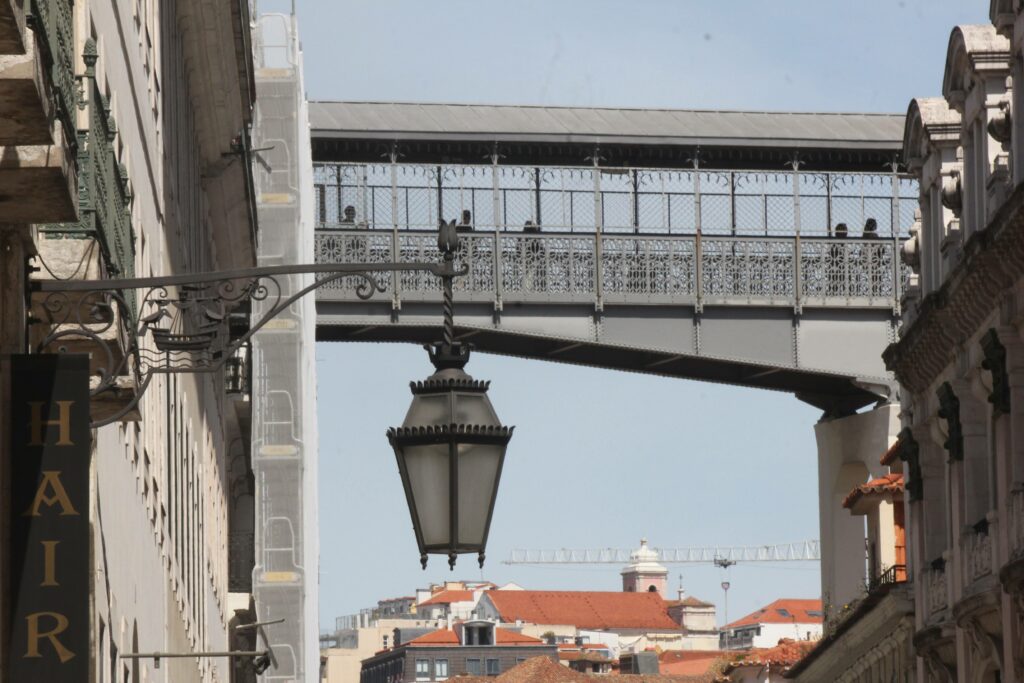
If you decide to visit the Elevador de Santa Justa at ground level, you should know it is popular and expect long queues. To avoid queues, starting at the top and working your way down is best.
However, getting to the top requires some effort, which may be tiring. Walking up the hill towards Príncipe Real, you’ll discover the gardens and viewpoint of São Pedro de Alcântara, providing another breathtaking panoramic view of the city.
It is an ideal spot to grasp the city’s essence and map out your itinerary.
Rua das Portas de Santo Antão
Rua das Portas de Santo Antão is one of many shopping streets in Baixa Chiado. The lively street is known for its diverse dining options, particularly seafood. Numerous restaurants along this charming avenue serve traditional Portuguese and international cuisines.
Planning On Going To Lisbon?
I’ve created a trip planner where you enter the number of days you’re going and what activities you want to do.
Based on your input, you then get an entire vacation planned with ideas.

Lisbon Cathedral (Sé de Lisboa)
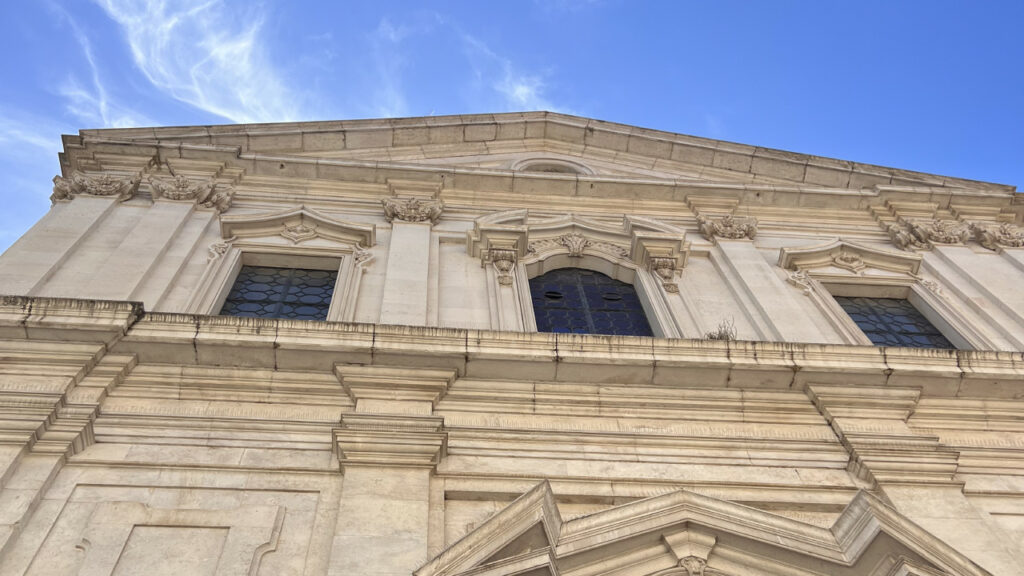
Lisbon’s history is steeped in religious architecture and boasts several religious buildings.
One such church, established in the 12th century, is the oldest in Lisbon and deserves a visit.
The church is a stunning example of a blend of Gothic and Romanesque architectural styles. Its striking features include magnificent stained glass windows and a beautiful bell tower.
A visit to this historic church is a must for anyone interested in exploring the rich cultural heritage of Lisbon.
Carmo Convent
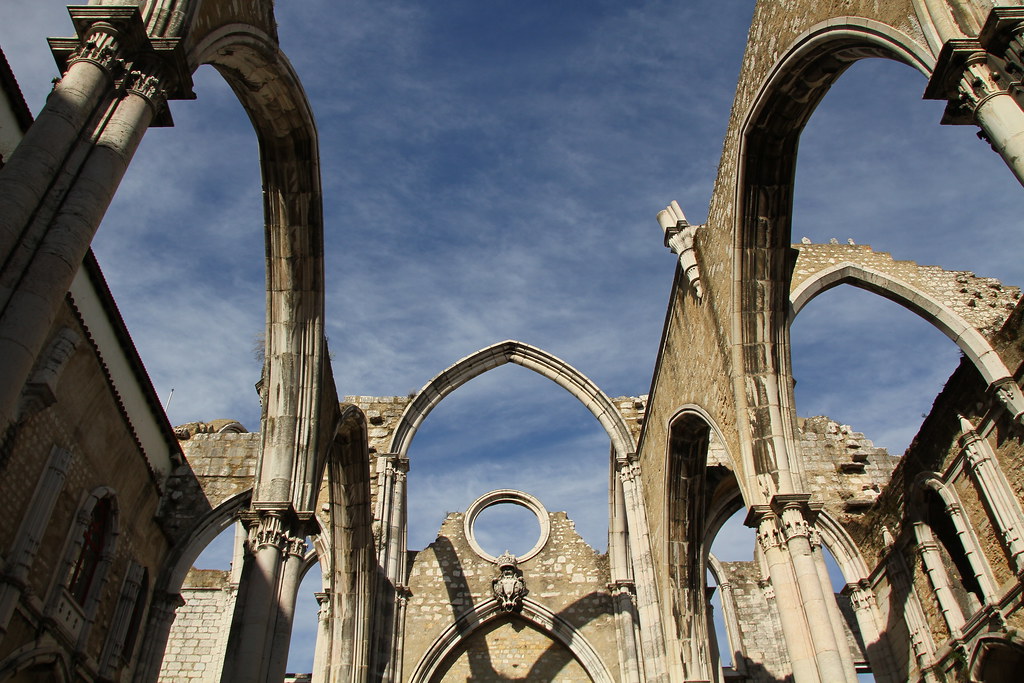
The Convento do Carmo is a remarkable Gothic church that survived the devastating earthquake of 1755, albeit with some damage.
The remains of the convent itself are intriguing, and it currently serves as a museum exhibiting a remarkable collection of art and artifacts.
Among the exhibits is a wooden sculpture of Christ from the 14th century and a collection of shrunken heads.
Allegedly, devout Christians who visit the church are entitled to 40 days of indulgence, making it a convenient stop for those in Lisbon.
Basílica de Nossa Senhora dos Mártires
The Basílica de Nossa Senhora dos Mártires is one of three churches in Baroque and Rococo style situated on Rua Garrett, Chiado’s main street.
Although the exterior isn’t much to boast about, the interior is stunning and is considered one of the most spectacular architectural wonders in the city.
Furthermore, you can explore Rua Garrett for some Portuguese cuisine, shopping, and more.
Conceição Velha Church
Conceição Velha Church dates back to the 16th century. It features beautiful tilework and is known for its historical significance. It’s a peaceful retreat in the heart of the bustling district.
Rua dos Fanqueiros
Rua dos Fanqueiros is a charming street with historic architecture and contemporary shops. It provides a glimpse into local life and offers a more relaxed atmosphere than some busier streets.
LX Factory
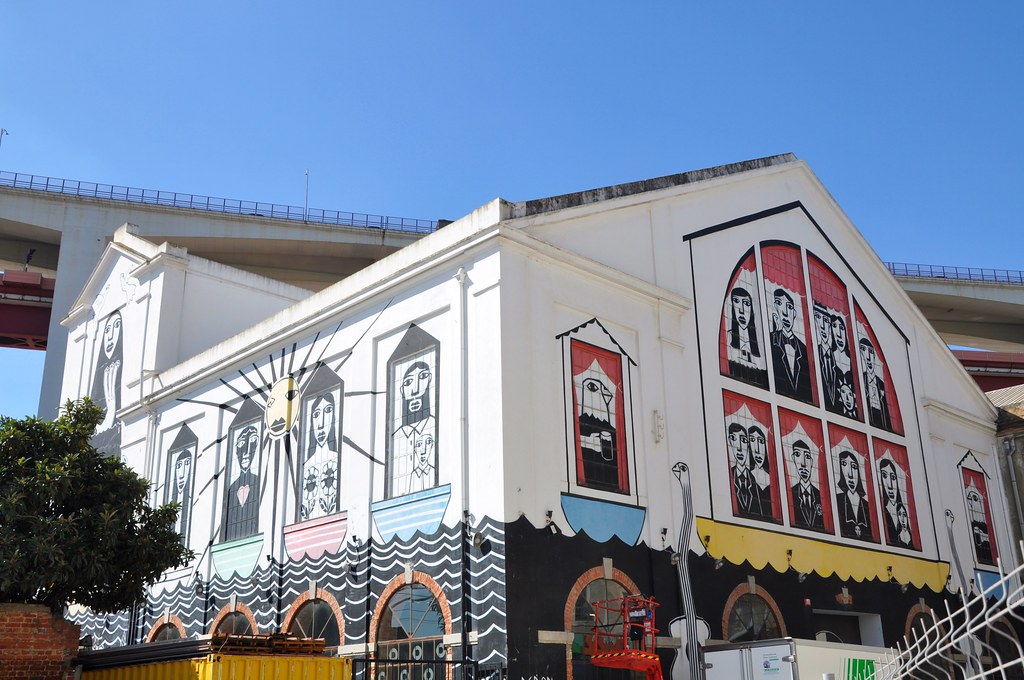
While not directly in Baixa but nearby, this creative and cultural hub is housed in an old industrial complex beneath the Ponte 25 de Abril bridge. It’s known for its art studios, trendy shops, eclectic dining options, and a vibrant atmosphere.
Fado Houses
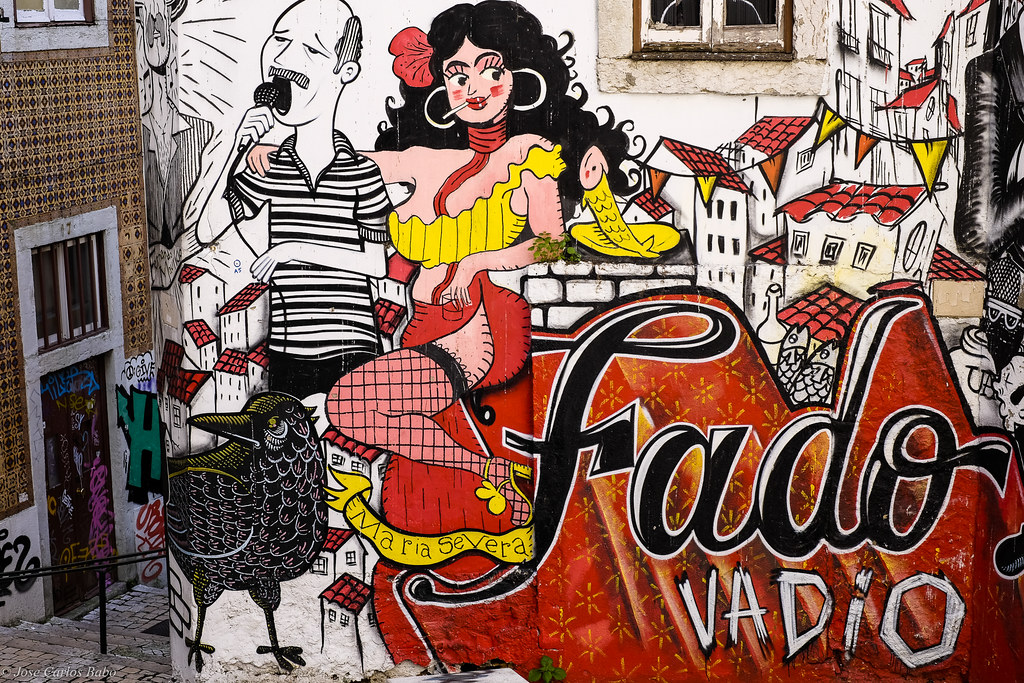
Throughout Baixa, you’ll find intimate venues offering Fado performances. This traditional Portuguese music genre is known for its emotional and soulful melodies, often accompanied by Portuguese guitar.
Hot Tip🔥: Baixa is not the only place to find Fado Houses. I have selected the eight best Fado Houses in Lisbon to learn more.
Avenida Da Liberdade
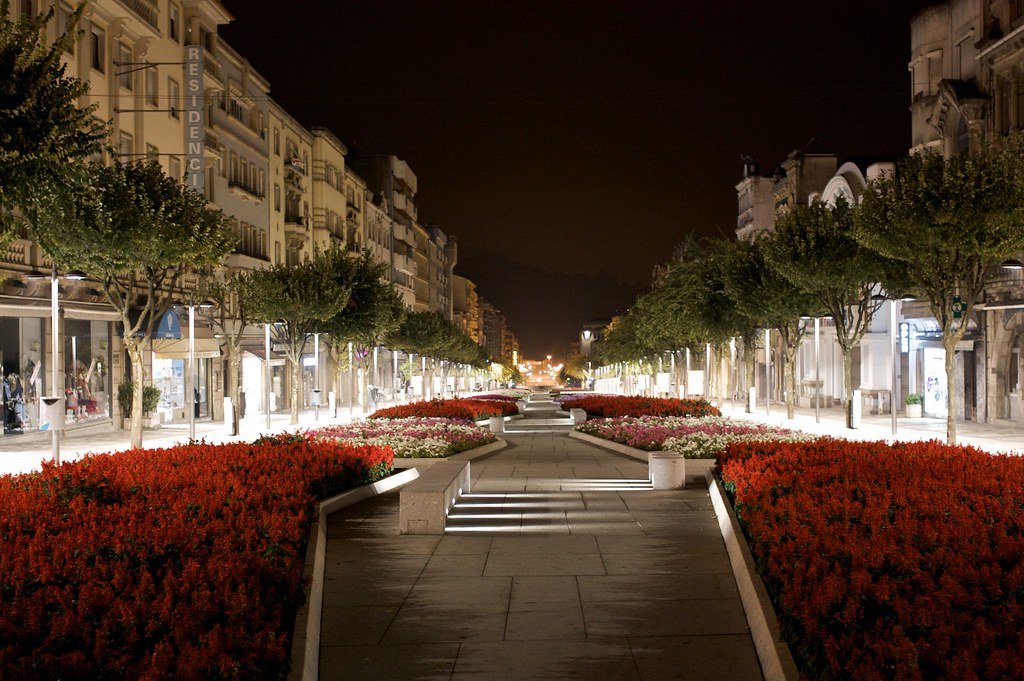
Avenida da Liberdade is close to Baixa, within walking distance of the district. You can also use the blue metro line to reach it.
Avenida da Liberdade is a famous boulevard in Lisbon, Portugal. It is known for its upscale shops, hotels, and historic buildings.
The avenue was built in the 19th century and modeled after Paris’s Champs-Élysées.
It stretches for 1.1 kilometers and is a popular destination for tourists and locals alike.
Baixa Challenges While Exploring
Baixa is situated in the heart of Lisbon, extending from the riverfront to the hills. The Alfama district borders it to the east, Bairro Alto to the west, and the Tagus River to the south. The central location makes Baixa easily accessible and a strategic starting point for exploring Lisbon’s historical and cultural attractions.
Getting Around Baixa-Chiado
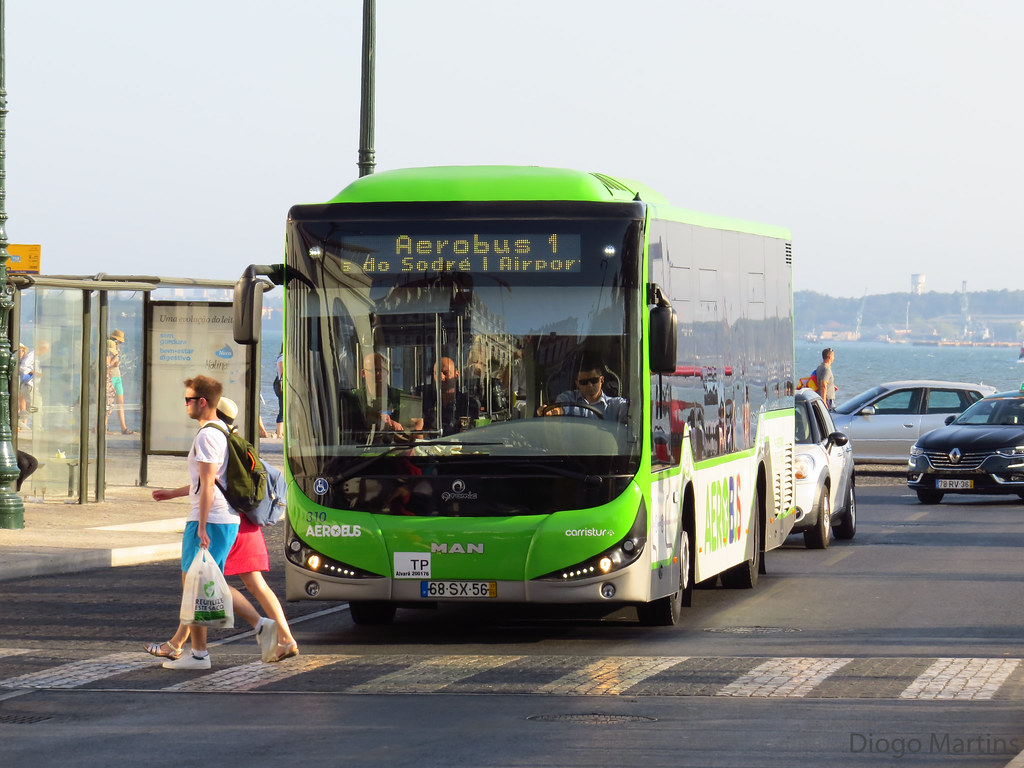
- Walking: Baixa is pedestrian-friendly, allowing a stroll through its streets and squares. Many attractions are within walking distance of each other.
- Trams: The iconic yellow tram 28 traverses Baixa, offering a scenic route through its narrow streets and hills. It’s a charming way to explore the district.
- Metro: Baixa is well-connected to the Lisbon Metro. The Baixa-Chiado station provides easy access to the Blue and Green lines, facilitating travel within the district and to other parts of the city.
- Buses: Several bus routes pass through or near Baixa, providing additional transportation options for visitors exploring different areas of Lisbon.
- Taxis and Ride-Sharing: Taxis and ride-sharing services are readily available and offer convenient transportation within and beyond Baixa.
Navigating Baixa is relatively straightforward due to its central location and well-connected transportation options, making it accessible for visitors to explore this Lisbon district’s rich history and vibrant culture.
Hot Tip🔥: Before visiting Lisbon, it helps to know how the public transport system works, so please familiarize yourself with my detailed guide.
Costs of Day Trips in Baixa
Exploring Baixa need not be an expensive day trip, especially when you enter the churches or admire the plazas. But if you do decide to explore some of the notable tourist attractions, the fees are as follows:
- EUR 5.30 to ride on Elevador de Santa Justa
- EUR 3 at the viewpoint Arco da Rua Augusta
- EUR 1.50 to go up to the Elevador de Santa viewpoint
- Riding the Ascensor da Gloria funicular costs EUR 3.80
- A single metro ticket will cost you EUR 1.80
- Lastly, the Igreja de Sao Roque costs EUR 5
Hot Tip🔥: I recommend you invest in the 24-hour public transport ticket that costs EUR 6.80. It includes the Elevador de Santa Justa, Gloria funicular, and the Tram 28E with trams and using the metro. These tickets are of value, and you can buy them from any metro station.
Here are the best things to do in Lisbon In May 2024
I’ll send you a list of the best things to do in May and every month moving forward from today.
It’ll be based on my personal experience of living and traveling around Lisbon. A lot of hidden gems.
Staying in Baixa Chiado
In Baixa Chiado, Lisbon offers a central and vibrant experience with easy access to historical sites, cultural attractions, lively streets, and emblematic squares. Here’s a brief guide to enhance your stay:
Accommodations:
- Hotels: Baixa boasts a range of hotels catering to various budgets. You can find luxurious options with river views or charming boutique hotels in historic buildings.
- Hostels: For budget travelers, hostels in the area provide a friendly atmosphere and the chance to meet fellow travelers.
- Apartments: Consider renting an apartment for a more independent stay. This option allows you to experience the city like a local, with the flexibility to cook meals and live at your own pace.
Baixa Chiado Nightlife

While Baixa Chiado is not primarily known for its nightlife, it is a central hub with easy access to other districts, making it a convenient starting point for those exploring Lisbon’s vibrant nighttime scene. Here are some nightlife options and nearby areas you can consider when staying in Baixa:
- Bairro Alto: Located just west of Baixa, Bairro Alto is renowned for its lively nightlife. This historic neighborhood comes alive after dark with many bars, pubs, and clubs. The narrow streets are filled with people enjoying drinks, live music, and a festive atmosphere.
- Cais do Sodré: South of Baixa, Cais do Sodré is another nearby district with a dynamic nightlife scene. This area offers a mix of trendy bars, clubs, and waterfront spots. Pink Street (Rua Nova do Carvalho) is particularly popular for its colorful nightlife.
- Ginjinha Bars in Baixa: While not traditional nightlife, exploring the charming Ginjinha bars in Baixa can be a delightful evening activity. Enjoy a glass of this traditional cherry liqueur in a cozy and historic setting.
- Fado Houses: Experience the soulful sounds of Fado, a traditional Portuguese music genre, in the intimate Fado houses scattered around Baixa. These venues often offer a cultural and musical experience in the evening.
- Terrace Bars: Some hotels and rooftop bars in Baixa provide a more relaxed evening experience with panoramic city views. It’s a great way to unwind after a day of exploring.
Best Restaurants in Baixa Chiado Lisbon
Explore the following dining options for a memorable culinary experience in Chiado.
Starting from Rua Garrett, you will find a cafe named A Brasileira, renowned for its 19th-century interiors and the story behind Brazil’s first coffee exporter.
Here, you can taste the Portuguese espresso style of coffee known as ‘bica,’ which is a must-try. Organi Chiado is the perfect place for vegetarians. It offers a daily vegetarian menu at Calçada Nova de São Francisco 2.
For a traditional Portuguese dessert, Pasteis de Nata, visit Manteigaria at Rua do Loreto 2. Locals highly recommend this place, which is said to be even better than the iconic Pasteis de Belem.
If you crave Italian cuisine, Dama e Vagabundo is one of the best places in Baixa. Lastly, head to Alma at R. Anchieta 15 for authentic Portuguese cuisine.
This Michelin-starred restaurant is a bit on the expensive side, but its culinary offerings will leave you speechless.
How Safe is Baixa
Baixa is generally considered a safe district in Lisbon. It is famous for its vibrant atmosphere and numerous tourist attractions, which attract both locals and visitors.
Yet, as with any urban area, it’s crucial to be aware of your surroundings and take common-sense precautions to ensure a safe experience. During the day, Baixa is bustling with activity, and the main tourist areas are generally safe.
Nevertheless, it’s advisable to remain cautious, especially in crowded places, to guard against pickpocketing. Be mindful of your belongings, and take extra care in busy tourist spots.
In the evening, while Baixa remains lively, it’s recommended to stay vigilant, especially in less crowded areas. Stick to well-lit streets and avoid poorly lit or deserted alleys.
While the district is known for its safety, taking precautions becomes particularly important after dark. Be attentive to your belongings and surroundings when using public transportation, such as buses and trams.
Stay alert to prevent pickpocketing incidents occasionally occurring in crowded public spaces. If you explore the nightlife in Baixa or nearby districts, practice responsible behavior and be cautious in less familiar surroundings.
Familiarize yourself with local emergency numbers, such as 112 in Portugal, the general emergency number for police, medical assistance, and fire services. Lastly, be cautious of common tourist scams, including distractions, fake petitions, or individuals engaging you in suspicious conversations.
Stay alert, trust your instincts, and enjoy Baixa’s beauty and cultural richness.
The Advanced Lisbon Quiz
You’re now at the advanced Lisbon quiz with more difficult questions. No one gets every question right, so don’t beat yourself up on it. Good luck.
Wrap-Up: Visiting Baixa Lisbon
Baixa, Lisbon, offers a captivating blend of history and modernity. The district is generally safe for exploration with its neoclassical architecture, lively squares, and central location.
From bustling Rossio Square to picturesque Commerce Square and Arco da Rua Augusta, Baixa provides a delightful array of attractions. Baixa is a central and accessible base for immersing yourself in Lisbon’s rich culture.
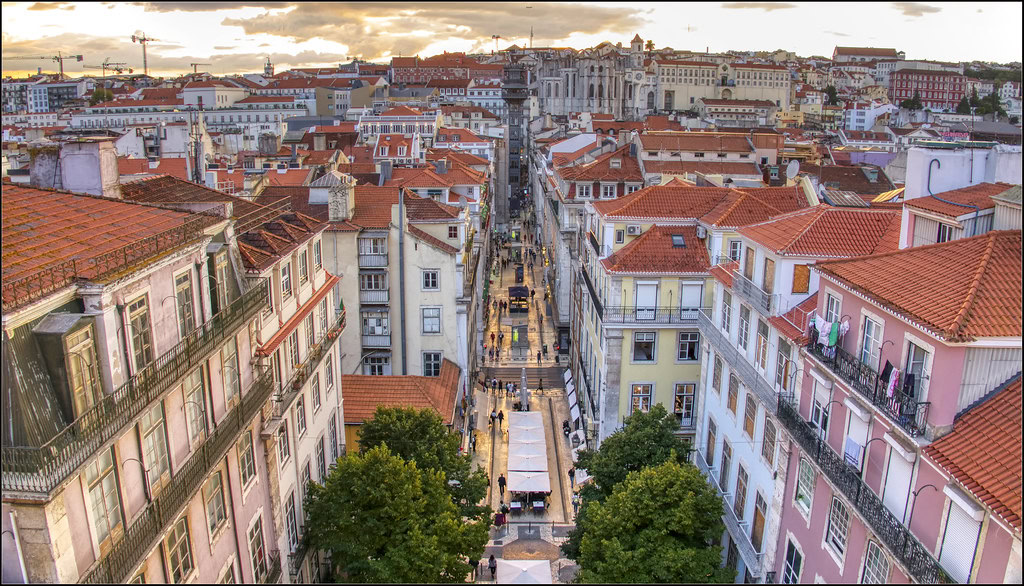

![Lisbon in October: 7 Things to Do [+ Guide] 34 Lisbon in October: 7 Things to Do [+ Guide]](https://lisboavibes.com/wp-content/uploads/2023/12/Lisbon-in-October-768x512.jpeg)
